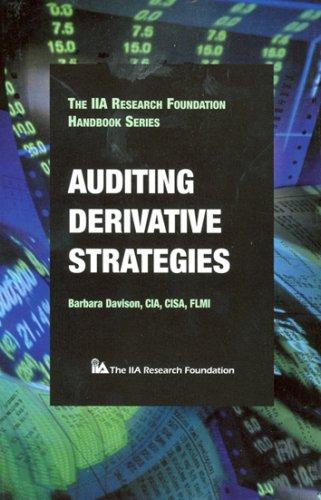Question
Assume that on October 1, 2016 a metal refining company has one million ounces of silver that cost $5.00 per ounce ($5,000,000 total cost using
Assume that on October 1, 2016 a metal refining company has one million ounces of silver that cost $5.00 per ounce ($5,000,000 total cost using FIFO) in its inventory. To protect the inventory from a decline in silver prices, the Company hedges its position by selling 200 silver futures contracts on the New York Mercantile Exchange (NYMEX). Each contract is for 5,00 ounce of silver at $5.55 per ounce. The futures contacts mature in March 2017 which coincides with the date for which the company has schedules delivery of ht silver to its Japanese customer at what is then the NYMEX spot price.
The Company designates the futures contracts as a fair value hedge of its silver inventory (i.e., its is hedging changes in the inventory's fair value, not changes in anticipated cash flows from the planned sale in March).
On December 31, 2016 (the company's fiscal year-end) the March price of silver futures has fallen from $5.55 to $5.40 per ounce.
On March 20, 2017, the company closes out its futures contracts. On that same day, the company also sells one million ounces of silver to its Japanese customer for $5.25 per ounce.
On December 31, 2016 and March 20, 2017, the cumulative gain on the future contacts is $150,000 and $300,000 respectively, based on changes in the silver-futures prices. On those same dates, the company determines that the fair value of its silver inventory cumulatively declines by $160,000 and $320,000 respectively.
Problem G: Assume the facts in the problem described above, except that the company decides that it would like to apply cash-flow hedge accounting to the transaction. The company, therefore, designates the silver future contracts as cash-flow hedge of the anticipated sale of the silver inventory to its Japanese customer (i.e., the company does not have a contracts to sell the silver in March but anticipates that the sale will occur, based on its sales history with this customer). In this transactions, the company is hedging its exposure to changes in cash flows from anticipated sale.
Important Note: Because this is a cash flow hedge, you will not be making the inventory into fair value. Indeed, you do the normal thing that one would do for inventory. Well, it turns out that that the normal thing for inventory is something called lower-of-cost-or-market. That is NOT fair value(it's some calculation that does not typically end up being fair value, although it could get close to fair value). So for purposes of this problem, be aware that there probably would be some kind of write-down of the inventory, but NOT because of the hedging situation.
REQUIRED: Show all entries. Note: this problem is adapted form the PWC "A Guide to Accounting for Derivative Instruments and Hedging Activities."
Step by Step Solution
There are 3 Steps involved in it
Step: 1

Get Instant Access to Expert-Tailored Solutions
See step-by-step solutions with expert insights and AI powered tools for academic success
Step: 2

Step: 3

Ace Your Homework with AI
Get the answers you need in no time with our AI-driven, step-by-step assistance
Get Started


